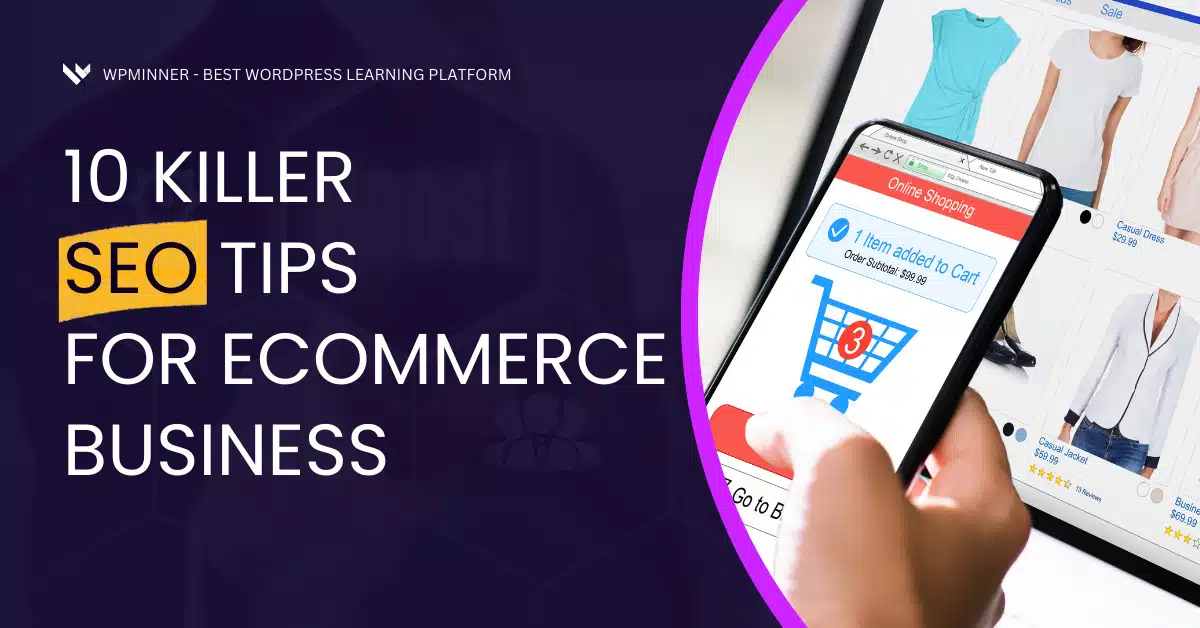In today’s competitive online market, simply having an e-commerce store isn’t enough. To truly thrive, you need to make sure your website is discoverable by search engines and attractive to users. That’s where SEO optimization tips for e-commerce websites come into play. With the right strategies, you can improve visibility, attract more organic traffic, and ultimately increase conversions and sales.
Whether you’re just launching your store or looking to fine-tune an existing one, this guide offers proven, practical SEO tips tailored specifically for e-commerce success.
Why SEO Optimization Matters for E-Commerce Websites
Search engine optimization (SEO) is the backbone of digital visibility. For e-commerce businesses, effective SEO means:
- Higher rankings on Google and other search engines
- Increased organic (unpaid) traffic
- Lower customer acquisition costs
- Higher return on investment (ROI)
- Improved user experience and trust
Ignoring SEO is like opening a store in the middle of the desert. Let’s change that.
Top SEO Optimization Tips for E-Commerce Websites
1. Conduct Keyword Research With Purchase Intent
Don’t just go for high-volume keywords. Focus on keywords with commercial intent—terms that indicate the user is ready to buy. For example:
- “Buy wireless earbuds online”
- “Best running shoes under $100”
Tools to use:
- Google Keyword Planner
- Ahrefs
- SEMrush
- Ubersuggest
LSI keywords: product reviews, best deals, free shipping, customer ratings
2. Optimize Product Pages Properly
Your product pages are the money-makers. Here’s how to optimize them:
- Include the primary keyword in the title tag, meta description, and H1
- Write unique product descriptions (avoid manufacturer copy)
- Use alt text for all product images
- Add FAQs and customer reviews to boost content
3. Use Clean, SEO-Friendly URLs
A good URL is readable and includes relevant keywords.
Good example: yourstore.com/wireless-earbuds
Bad example: yourstore.com/product?id=12345
Search engines and users both prefer clarity.
4. Implement Technical SEO Best Practices
Technical SEO is crucial to ensure search engines can crawl and index your site.
Checklist:
- Use HTTPS
- Submit an XML sitemap to Google – Generate Website Sitemap with One Click
- Set up robots.txt
- Optimize site speed (use tools like Google PageSpeed Insights)
- Ensure mobile responsiveness
- Use structured data (Schema.org for products, reviews, etc.)
External link: Google Search Central – Structured Data
5. Choose a Reliable Hosting Provider (It Really Matters!)
Your hosting provider directly impacts your website’s speed, security, and uptime—all critical factors in SEO performance. A slow or frequently down e-commerce website frustrates users and pushes your rankings down in Google.
Why Hosting Matters for SEO:
-
Faster load times = lower bounce rates
-
Secure sites (with SSL) are ranked higher
-
Reliable uptime ensures your site is always accessible for crawling and conversions
We recommend using Hostinger for your e-commerce website. It’s fast, secure, and built to scale with online stores. Hostinger also includes:
-
Free SSL certificate
-
Built-in caching and performance optimizations
-
One-click integrations with WooCommerce, WordPress, and more
-
24/7 customer support to help you resolve issues fast
✅ Pro Tip: Google loves secure and fast-loading websites. Make sure your store is hosted on a reliable platform to give your SEO a head start.
6. Optimize Site Navigation and Internal Linking
Clear, logical navigation helps both users and search engines.
- Use breadcrumb navigation
- Link related products together
- Add category-level internal links from blog posts
- Ensure every page is accessible within 3 clicks
Internal link: Learn How to Create an Ecommerce Store on WordPress using WooCommerce
7. Create Unique Category Pages with SEO Content
Too often, category pages are just lists of products. Add value by including a few hundred words of SEO-optimized content.
Include:
- A short intro at the top with primary and LSI keywords
- A footer section with FAQs or buying tips
8. Leverage User-Generated Content (UGC)
Product reviews, Q&A, and testimonials are rich in keywords and trust signals.
- Enable product ratings and reviews
- Highlight popular customer questions
- Allow photo uploads from customers
9. Optimize for Mobile-First Indexing
More than 60% of users shop from mobile. Google indexes your mobile site first.
- Use responsive design
- Avoid intrusive pop-ups
- Ensure fast mobile loading speeds
Test with: Google Mobile-Friendly Test
10. Create Blog Content That Supports Your Products
A well-maintained blog can funnel organic traffic to your products.
Blog ideas:
- “How to choose the right wireless earbuds”
- “Top 5 home workout gadgets in 2025”
Each post should:
- Include product links
- Target informational and transactional keywords
- Use primary and LSI keywords
11. Focus on Conversion Optimization
Good SEO gets traffic. Great SEO drives sales.
Tips:
- Use clear CTAs (Buy Now, Add to Cart)
- Offer trust badges and return policies
- Simplify the checkout process
FAQs: SEO Optimization Tips for E-Commerce Websites
What is the most important SEO strategy for e-commerce websites?
Keyword-rich, optimized product pages are the foundation of e-commerce SEO. Without them, you’ll struggle to convert search traffic into buyers.
How often should I update my SEO strategy?
Every 3–6 months is ideal. Keep an eye on algorithm updates and competitor performance.
Can I rank without backlinks?
You can rank for long-tail keywords, but competitive terms typically require quality backlinks.
How many keywords should I target per page?
One primary keyword and 2–3 LSI keywords is a good balance.
Final Thoughts: Turn SEO Into a Sales Engine
Implementing these SEO optimization tips for e-commerce websites can give you a major edge over competitors who aren’t putting in the work. SEO isn’t a one-time task—it’s an ongoing process that pays off in the form of traffic, trust, and transactions.
Looking to scale your e-commerce growth even further? Check out our comprehensive e-commerce growth toolkit for advanced strategies and templates.
Start optimizing today, and turn your online store into a traffic magnet that sells 24/7.








